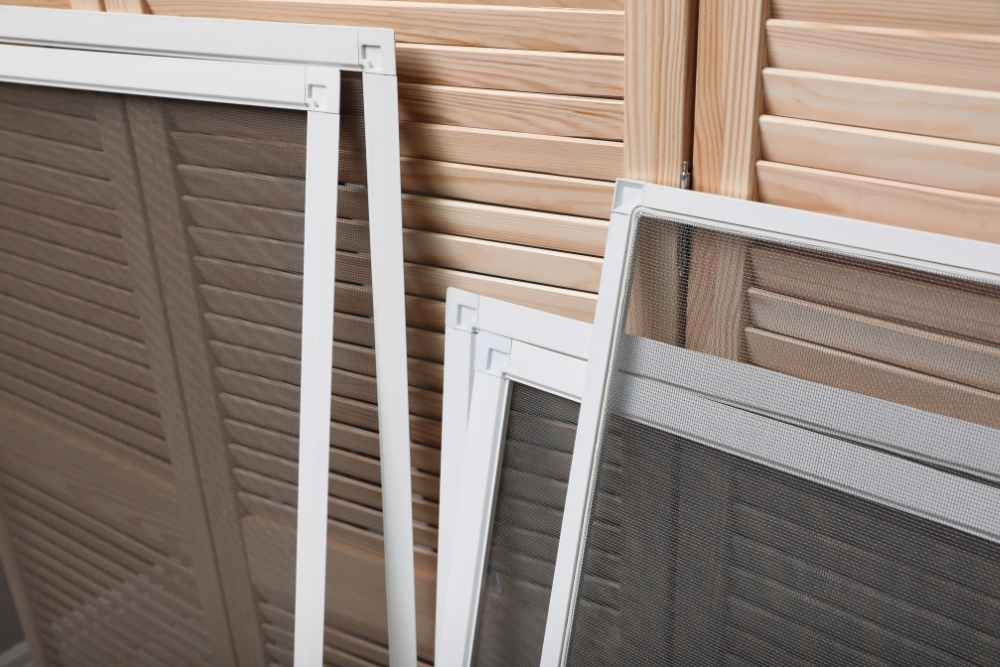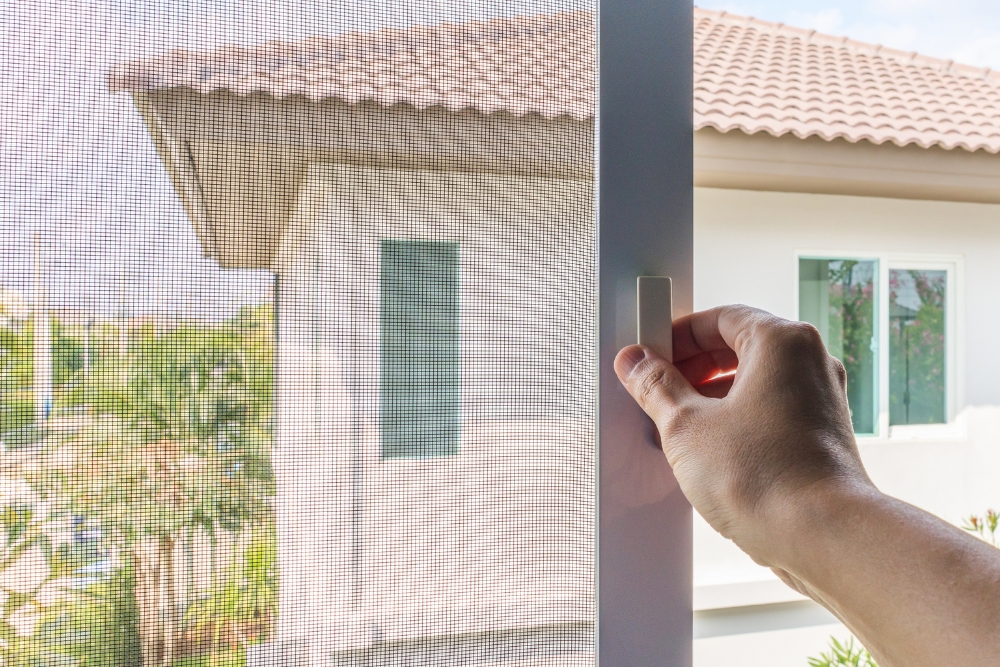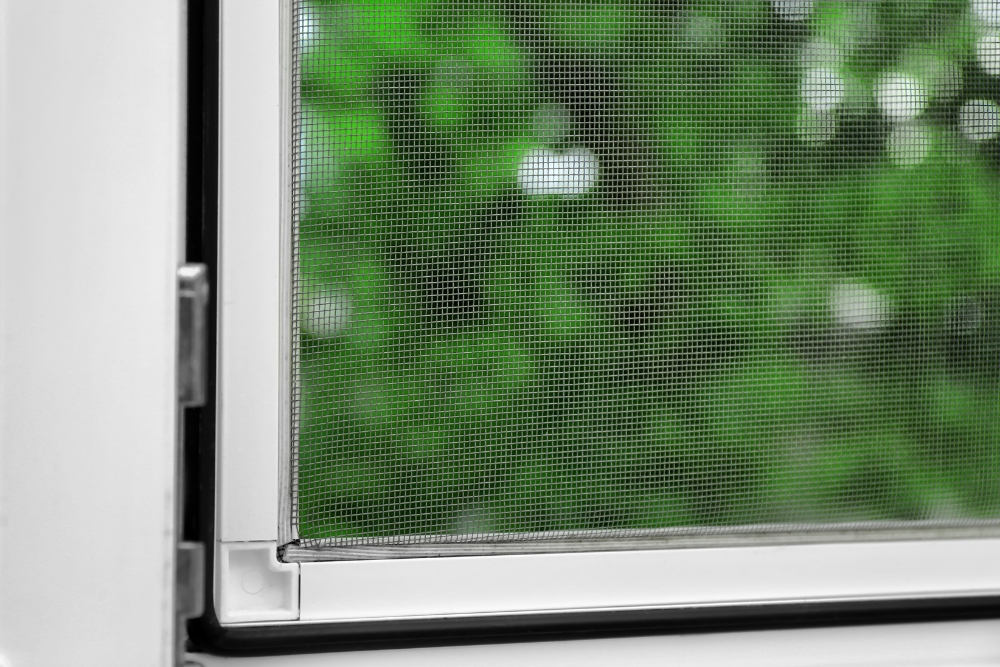Ever found yourself gazing through a stark window and feeling like you’re a world away from the vibrant outdoors? We get it, sometimes our own four walls feel more like they’re closing in than sheltering us.
But don’t worry, there’s hope yet! Bringing the outside in doesn’t just add a splash of life to your home – research is showing it can do wonders for your well-being too. This yarn’s all about weaving biophilic design into your window screens, letting that natural light pour in and reconnecting you with nature’s charm.
Key Takeaways
- Biophilic design incorporates natural elements into built environments, and has roots dating back to ancient architecture, gaining popularity through the work of Edward O. Wilson in the 1980s.
- Natural light, greenery, and outdoor views can significantly lower stress and boost productivity when integrated into window designs for homes and workplaces.
- Optimal window placement maximises sunlight and offers beautiful views; different types of glazing such as Low-E or tinted glass help manage heat gain while maintaining a connection with nature.
- Incorporating earthy colour tones in frames and technology like smart glass enhances biophilic window functionality, merging modern living with our innate need for nature’s touch.
- Case studies reveal that biophilic design within workplaces results in happier employees while those in homes contribute to residents’ well-being—highlighting its profound impact on daily life.
The Basics of Biophilic Design
Biophilic design is all about incorporating natural elements and patterns into our built environments, connecting us with nature. It’s based on the idea that humans have an innate need to connect with nature and reap the benefits of doing so.
From reducing stress levels to increasing productivity, biophilic design has numerous benefits for our well-being.
Definition and history
Let’s dive into what biophilic design means. It’s all about creating spaces that deeply connect to nature, bringing elements like plants, water features, and natural light into our everyday environments.
The term ‘biophilic’ itself comes from “bio,” meaning life, and “philia,” signifying an affinity for. Architect Edward O. Wilson popularised this concept in the 1980s, suggesting that humans have an innate desire to connect with the natural world. Historically speaking, we’ve been introducing bits of nature into our homes and workplaces for centuries – think courtyards in ancient houses or hanging gardens in city spaces.

However, it wasn’t until recent decades that we began to understand how crucial this connection is for our well-being and happiness.
Modern architects now use principles of biophilic architecture to create buildings that blend seamlessly with their natural surroundings using sustainable materials and green building techniques like skylights and eco-friendly glazing systems.
Importance of nature in design
After understanding the definition and history of biophilic design, it becomes clear that nature plays a crucial role in design. Incorporating natural elements like sunlight, greenery, and natural ventilation can greatly impact our well-being and productivity.
Nature-inspired design not only enhances the aesthetic appeal of our living or working spaces but also fosters a connection with the outdoors, creating a sense of calm and tranquillity.
The use of natural elements in architecture aligns with sustainable building principles, contributing to eco-friendly design practices.
Bringing nature indoors through biophilic window designs is essential for creating a harmonious environment that promotes health and wellness. By integrating natural light and outdoor views into interior spaces, homeowners or office owners can enhance their surroundings while reducing reliance on artificial lighting and ventilation systems.
Benefits of biophilic design
Biophilic design offers numerous benefits for homes and workplaces. Incorporating nature into our indoor spaces has been shown to reduce stress, enhance creativity, and improve overall well-being.
By integrating natural elements such as daylighting, greenery, and outdoor views through window screens, we can create a more calming and inspiring environment that promotes productivity and concentration.
Bringing nature indoors not only creates aesthetically pleasing spaces but also contributes to sustainable building design. Biophilic architecture principles align with eco-friendly practices by reducing energy consumption through natural lighting and ventilation strategies.
Incorporating Nature into Window Screens
When it comes to biophilic design, window screens provide the perfect opportunity to connect with nature. By allowing natural light to flood into space and offering views of the outdoors, window screens can enhance our connection to the natural world.
Additionally, incorporating natural elements such as plants or greenery into window designs can further bring nature indoors.
Utilising natural light
Position your furniture so that natural light can flood in, brightening up the space and reducing the need for artificial lighting. Install sheer window coverings to let in ample daylight while maintaining privacy.
Consider skylights or light tubes to bring more daylight into darker areas of your home or office. Harnessing natural light not only reduces energy consumption but also creates a pleasant and inviting atmosphere.
Integrating large windows with expansive views of greenery makes spaces feel larger and more open. Choose materials for window screens that allow maximum sunlight penetration without compromising on energy efficiency or UV protection.
Connecting with outdoor views
Position your windows to offer captivating outdoor views, such as lush greenery or calming natural landscapes. This connection with the outside world can elevate mood and productivity within indoor spaces.
Incorporating nature into your window screens creates a seamless transition between the indoors and outdoors, promoting a sense of calm and relaxation throughout the day.
Enhance your living or working environment by choosing window designs that frame and emphasise picturesque outdoor scenes, allowing you to benefit from the restorative power of nature without leaving your space.
Incorporating natural elements
Position plants or living walls near windows to create a seamless transition between indoor and outdoor spaces. Use natural materials like wood, stone, or bamboo in window frames or screens to bring an organic touch to your space.
Incorporate water features such as fountains or small ponds near windows to introduce the soothing sounds of nature into your environment. These natural elements can enhance the connection with the outdoors and contribute to a more tranquil and rejuvenating atmosphere within your home or office.
Integrate potted plants on window sills, shelves, or hanging planters to add greenery and colour while improving air quality. Install bird feeders outside windows so you can enjoy watching birds from inside, creating a closer link with nature throughout the day.

Strategies for Biophilic Window Design
We’ll discuss optimal window placement, types of glazing, colour choices and the use of technology to integrate nature with window screens. Check out these strategies to bring the outdoors inside! Click here to learn more about biophilic window design.
Colour choices
When considering biophilic window design, carefully choosing colours for your window frames and screens is crucial. Opting for earthy tones such as forest green, deep brown, or sandy beige can mimic natural elements and promote a sense of tranquillity within the space.
These hues seamlessly blend with the outdoor environment while creating a seamless transition from indoors to nature. Additionally, embracing shades inspired by foliage and flora not only enhances the aesthetic appeal but also contributes to a calming atmosphere in both residential and office settings.
Incorporating soft blues or greys can also evoke feelings of serenity reminiscent of vast skies or reflective waters. These cooler tones offer a refreshing contrast against lush greenery as well as provide a sense of openness and expansiveness in smaller spaces.
Optimal window placement
- Place windows where they can capture the most sunlight throughout the day, providing natural daylight and reducing the need for artificial lighting.
- Orient windows to take advantage of scenic outdoor views, such as gardens or green spaces, fostering a sense of tranquillity and visual delight.
- Ensure proper ventilation by strategically situating windows to facilitate airflow and promote indoor-outdoor connectivity.
- Position windows to minimise glare and direct sunlight exposure, balancing natural light levels without compromising comfort.
Types of glazing
When considering biophilic window design, it’s important to understand the different types of glazing that can enhance the connection with nature and maximise natural light intake. Here are some key types of glazing to consider:
- Low-E Glass: This type of glazing helps to minimise heat transfer and UV rays while allowing natural light into the space.
- Tinted Glass: Tinted glazing can reduce glare, provide privacy, and control solar heat gain, all while still allowing a connection to the outdoors.
- Insulating Glass Units (IGUs): These units consist of two or more panes of glass separated by a spacer and sealed as a single unit, offering improved thermal performance and sound insulation.
- Dynamic Glazing: This innovative technology allows glass to switch between clear and tinted states based on external conditions, providing optimal daylighting and energy efficiency.
- Reflective Coatings: Glazing with reflective coatings can help manage solar heat gain and improve privacy while still maintaining outdoor views and natural light penetration.
- Laminated Glass: This type of glazing consists of a layer of polyvinyl butyral sandwiched between two or more layers of glass, offering enhanced safety, security, and noise reduction benefits.
The use of technology
When it comes to biophilic window design, technology plays a key role in enhancing the connection between indoor spaces and the natural world. Smart glass windows utilise advanced technology to adjust tint levels based on sunlight exposure, allowing for optimal daylighting while reducing glare and heat gain.
Additionally, motorised blinds or shades can be programmed to open and close automatically throughout the day, maximising views of outdoor greenery and providing occupants with dynamic visual connections to nature.
These technological advancements not only improve energy efficiency but also contribute to creating soothing and comfortable indoor environments that promote well-being and productivity.
Incorporating technology into biophilic window design offers homeowners and office owners innovative solutions for harnessing natural light, maintaining visual connections with the outdoors, and creating sustainable indoor environments.
Case Studies and Real-Life Examples
Explore how biophilic window designs have transformed workplaces and residential spaces, leading to improved well-being and productivity. These real-life examples showcase the positive impact of integrating nature with window screens in everyday environments.
Biophilic window designs in workplaces
Biophilic window designs in workplaces incorporate natural elements to enhance the connection with nature, boost well-being, and improve productivity. Using optimal window placement allows for maximising daylight and outdoor views, creating a sense of openness within the workspace.
The use of specific glazing types helps to control glare and heat while bringing in plenty of natural light. Additionally, incorporating greenery through indoor plants or vertical gardens can further contribute to a calming environment that promotes focus and creativity.
Furthermore, integrating biophilic design into workplace windows offers an opportunity to reduce energy consumption by allowing for more natural light and ventilation. This eco-friendly approach aligns with sustainable architecture principles and contributes to a healthier indoor environment for employees.
Biophilic designs in residential spaces
Transitioning from biophilic window designs in workplaces to residential spaces, integrating nature into our homes can significantly enhance our well-being and quality of life. By incorporating elements like natural light, greenery, and views of the outdoors through well-designed windows, we can create a calming and rejuvenating environment within our living spaces.
Maximising exposure to natural light and outdoor views not only increases visual comfort but also improves mood, energy levels, and overall health. Additionally, introducing elements such as indoor plants or living walls can further elevate the connection with nature indoors while promoting cleaner air quality.
Strategically placed windows that embrace outside scenery bring a sense of tranquillity while allowing for ample daylighting strategies. The use of nature-inspired colour palettes and materials can also imbue residential spaces with a feeling of serenity and connection to the natural world.
Success stories of improved well-being and productivity
Businesses and homeowners that have embraced biophilic window designs have reported significant improvements in overall well-being and productivity. Employees in workplaces with natural light exposure through biophilic windows have shown reduced stress levels, increased focus, and better job satisfaction.
Similarly, residential spaces with nature-inspired window screens have created tranquil environments that promote relaxation and mental well-being, leading to improved productivity and a sense of connection to the outdoors within the comfort of their homes.
Implementing biophilic design principles into window screens has demonstrated tangible benefits for both work environments and living spaces. By integrating these elements into our surroundings, we can create healthier and more productive indoor environments while staying connected to the natural world outside.
Biophilic Design for Your Space
In conclusion, integrating nature with window screens through biophilic design offers numerous benefits. Natural light and outdoor views can be harnessed to create a more connected and serene indoor environment.
Strategic window placement, glazing choices, colours, and technology all contribute to the successful implementation of biophilic window designs in both residential and workplace settings.
Achieving a balance between the built environment and nature not only enhances aesthetics but also promotes well-being and productivity.

